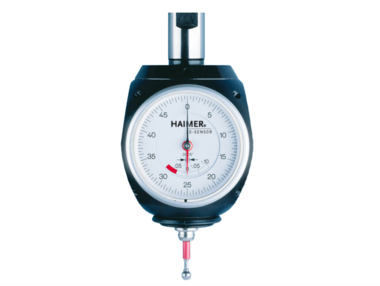4. What is an “integrated adapter”?
HAIMER 3D-Sensors are available with either a straight shank arbor (that can be used in conjunction with a collet chuck or end mill style holder) or with an integrated taper of your choice (CAT40, BT40, HSK) for direct placement into your machine.
5. Is there a way to compensate for runout in the spindle?
Yes. All HAIMER 3D-Sensors have adjustment screws that allow concentricity to be adjusted to a specific spindle.
6. Can it be used in both CNC and manual machines?
Haimer sensors are ideal in either environment. With their shock-resistant construction, the sensors can be stored in a tool pocket and tool changed directly into the spindle when needed.
7. Is there a digital version?
Yes. The Digital 3D Sensor features a backlit LED readout easily visible from long distances, such as when mounted in a large machining center.
8. How accurate is it?
Analog sensors are accurate within 0.0004”. Digital sensors are accurate within 0.0002”.
9. Is it waterproof?
All analog HAIMER 3D-Sensors are rated IP67, which means they are protected from dust and capable of withstanding water immersion between 15 cm and 1 meter for 30 minutes. Digital HAIMER 3D-Sensors are IP64 rated – protected from dust and splash from any direction.
10. What happens if the tip breaks?
Haimer's short and long probe tips feature a ceramic shaft that is designed to fracture when over-traveled, thus protecting the sensor itself. Tips feature an internal threaded bore so they can be easily removed and replaced if breakage occurs.
By the way, all HAIMER 3D-Sensors are individually tested and adjusted when being assembled in order to achieve maximum measuring precision (0.01 mm when used with original HAIMER probe tips).




Talk to Us!
Leave a reply
Your email address will not be published. Required fields are marked *